Supramaximal Eccentric Training for Alpine Ski Racing—Strength Training with the Lifter
Abstract
:Featured Application
Abstract
1. Eccentric Exercise in Alpine Ski Racing
2. Development of the IML
- The device will safely and quickly stop the bar if the athlete “fails” during a lift.
- The barbell will move freely (in all planes) during the eccentric portion of lift.
- There will be no external adjustments to the barbell load during a multiple repetition set.
- Automated assistance will be provided to safely return the barbell to the starting position of the eccentric phase (no concentric phase for the athlete).
- The range of motion (top and bottom of lift) can be adjusted for each athlete.
- The range of motion for all lifts performed by an athlete will be saved by the device.
- The device will provide training data which can be exported for training documentation.
- The machine can be used as a spotting device during normal lifts.
- The machine will have dimensions similar to a normal power rack.
- The machine cannot be used without a coach or training partner to operate the device.
- Automated assistance will be provided to safely return the barbell to the starting position of the concentric phase (no eccentric phase for the athlete).
- The arms will move fast enough that an athlete can perform a loaded squat jump or countermovement jump and the arms will catch the barbell at the top of the jump.
- Isokinetic movements can be performed with a bar attached to the arms in both concentric and eccentric movements. The force applied by the athlete on the arms will be measured and recorded.
- Isometric testing and training can be performed with a bar coupled to the arms. The force applied to the bar by the athlete will be measured and recorded.
- The velocities of the concentric and eccentric phases of the isokinetic movements can be independent of each other; one phase can be faster than the other.
3. Description of the IML
4. Safety Standards of the IML
- All emergency stop switches,
- The speed of the barbell,
- The displacement of the barbell, and
- The bottom movement limits of the exercise.
5. Training and Testing with the IML
5.1. Training Mode
5.1.1. Training with a Free Barbell
5.1.2. Spotter Mode
5.1.3. Eccentric Only Mode
5.1.4. Concentric Only Mode
5.1.5. Throw or Jump Mode
5.2. Training with the Simulation Bar
5.2.1. Isokinetic Mode
5.2.2. Simulated Load Mode
5.3. Measuring Strength with the Simulation Bar
5.3.1. Isokinetic Measurement
5.3.2. Isometric Measurement
6. A Case Study—Training with the IML
6.1. Methods
6.2. Results
7. Discussion
8. Conclusions
Author Contributions
Funding
Conflicts of Interest
References
- Berg, H.E.; Eiken, O.; Tesch, P.A. Involvement of eccentric muscle actions in giant slalom racing. Med. Sci. Sports Exerc. 1995, 27, 1666–1670. [Google Scholar] [CrossRef] [PubMed]
- Berg, H.E.; Eiken, O. Muscle control in elite alpine skiing. Med. Sci. Sports Exerc. 1999, 31, 1065–1067. [Google Scholar] [CrossRef] [PubMed]
- Vogt, M.; Dapp, C.; Blatter, J.; Weisskopf, R.; Suter, G.; Hoppeler, H. Training for optimization of the dosage of eccentric muscle action. Schweiz. Z. Sportmed. Sporttraumol. 2003, 51, 188–191. [Google Scholar]
- Hoppeler, H.; Vogt, M. Eccentric exercise in alpine skiing. In Science and Skiing IV; Mueller, E., Lindinger, S., Stoeggl, T., Eds.; Meyer & Meyer: Maidenhead, UK, 2009; pp. 33–42. [Google Scholar]
- Vogt, M.; Hoppeler, H. The role of eccentric exercise training in alpine ski racers. In Eccentric Exercise, Physiology and Application in Sport and Rehabilitation, 1st ed.; Hoppeler, H., Ed.; Routledge: London, UK, 2016; pp. 132–147. [Google Scholar]
- Supej, M.; Holmberg, H.-C. Recent kinematic and kinetic advances in Olympic alpine skiing: Pyeongchang and beyond. Front. Physiol. 2019, 10, 111. [Google Scholar] [CrossRef] [PubMed]
- Ferguson, R.A. Limitations to performance during alpine skiing. Exp. Physiol. 2010, 95, 404–410. [Google Scholar] [CrossRef]
- Kröll, J.; Spörri, J.; Fasel, B.; Müller, E.; Schwameder, H. Type of muscle control in elite alpine skiing—Is it still the same than in 1995? In Skiing and Science VI; Müller, E., Kröll, J., Lindinger, S., Eds.; Meyer and Meyer Sport Ltd.: Oxford, UK, 2014; pp. 56–64. [Google Scholar]
- Alhammoud, M.; Hansen, C.; Meyer, F.; Hautier, C.; Morel, B. On-field ski kinematic according to leg and discipline in elite alpine skiers. Front. Sports Act. Living 2020, 2, 56. [Google Scholar] [CrossRef]
- Turnbull, J.R.; Kilding, A.E.; Keogh, J.W.L. Physiology of alpine skiing. Scand. J. Med. Sci. Sports 2009, 19, 146–155. [Google Scholar] [CrossRef]
- Spörri, J.; Kröll, J.; Schwameder, H.; Müller, E. Turn characteristics of a top world class athlete in giant slalom: A case study assessing current performance prediction concepts. Int. J. Sports Sci. Coach. 2012, 7, 647–659. [Google Scholar] [CrossRef]
- Stöggl, T.; Schwarzl, C.; Müller, E.; Nagasaki, M.; Stöggl, J.; Scheiber, P.; Niebauer, J. A comparison between alpine skiing, cross-country skiing and indoor cycling on cardiorespiratory and metabolic response. J. Sports Sci. Med. 2016, 15, 184–195. [Google Scholar]
- Matej, M.; Kipp, R.; Holmberg, H.-C. Mechanical parameters as predictors of performance in alpine World Cup slalom racing: 1247. Scand. J. Med. Sci. Sports 2011, 21, e72–e81. [Google Scholar]
- Reid, R.; Gilgien, M.; Moger, T.; Tjorhom, H.; Haugen, P.; Kipp, R.; Smith, G. Mechanical energy dissipation and performance in alpine ski racing. Med. Sci. Sports Exerc. 2008, 40, S165. [Google Scholar] [CrossRef]
- Schmidtbleicher, D.; Bührle, M. Vergleich von konzentrischem und exzentrischem Maximalkrafttraining. Ber. Inst. Sport Sportwiss. Univ. Freibg. 1980, 1, 1–59. [Google Scholar]
- Suchomel, T.J.; Wagle, J.P.; Douglas, J.; Taber, C.B.; Harden, M.; Haff, G.G.; Stone, M.H. Implementing Eccentric Resistance Training—Part 1: A Brief Review of Existing Methods. J. Funct. Morphol. Kinesiol. 2019, 4, 38. [Google Scholar] [CrossRef] [Green Version]
- Refsnes, P.E. Testing and training for top Norwegian athletes. In Science in Elite Sport; Mueller, E., Ludescher, F., Zallinger, G., Eds.; E & FN Spon: London, UK, 1999; pp. 91–114. [Google Scholar]
- Raschner, C.; Kroell, J.; Zallinger, G.; Koesters, A.; Mueller, E. Trainingswissenschaftliche Aspekte eines exzentrischen Krafttrainings bei unterschiedlichen Bewegungsgeschwindigkeiten für alpine Skirennläufer. In Skilauf und Wissenschaft; Mueller, E., Lindinger, S., Raschner, C., Schwameder, H., Eds.; Österreichischer Skiverband: Innsbruck, Austria, 2001; Volume 15, pp. 92–101. [Google Scholar]
- Frohm, A.; Halvorsen, K.; Thorstensson, A. A new device for controlled eccentric overloading in training and rehabilitation. Eur. J. Appl. Physiol. 2005, 94, 168–174. [Google Scholar] [CrossRef] [PubMed]
- Gilgien, M.; Reid, R.; Raschner, C.; Supej, M.; Holmberg, H.-C. The training of olympic alpine ski racers. Front. Physiol. 2018, 9, 1772. [Google Scholar] [CrossRef] [PubMed] [Green Version]
- Hydren, J.R.; Volek, J.S.; Maresh, C.M.; Comstock, B.A.; Kraemer, W.J. Review of strength and conditioning for alpine ski racing. Strength Cond. J. 2013, 27, 927–934. [Google Scholar] [CrossRef]
- Tinwala, F.; Cronin, J.; Haemmerle, E.; Ross, A. Eccentric strength training: A review of the available technology. Strength Cond. J. 2017, 39, 32–47. [Google Scholar] [CrossRef]
- Stone, M.; Plisk, S.; Collins, D. Training principles: Evaluation of modes and methods of resistance training—A coaching perspective. Sports Biomech. 2002, 1, 79–103. [Google Scholar] [CrossRef]
- McCaw, S.T.; Friday, J.J. A comparison of muscle activity between a free weight and machine bench press. J. Strength Cond. Res. 1994, 8, 259–264. [Google Scholar]
- Schwanbeck, S.; Chilibeck, P.D.; Binsted, G. A comparison of free weight squat to Smith machine squat using electromyography. J. Strength Cond. Res. 2009, 23, 2588–2591. [Google Scholar] [CrossRef]
- Doan, B.K.; Newton, R.U.; Marsit, J.L.; Triplett-McBride, N.T.; Koziris, L.P.; Fry, A.C.; Kraemer, W.J. Effects of increased eccentric loading on bench press 1RM. J. Strength Cond. Res. 2002, 16, 9–13. [Google Scholar] [PubMed]
- Ojasto, T.; Hakkinen, K. Effects of different accentuated eccentric loads on acute neuromuscular, growth hormone, and blood lactate responses during a hypertrophic protocol. J. Strength Cond. Res. 2009, 23, 946–953. [Google Scholar] [CrossRef] [PubMed]
- Walker, S.; Blazevich, A.J.; Haff, G.G.; Tufano, J.J.; Newton, R.U.; Häkkinen, K. Greater strength gains after training with accentuated eccentric than traditional isoinertial loads in already strength-trained men. Front. Physiol. 2016, 7, 149. [Google Scholar] [CrossRef] [PubMed] [Green Version]
- Patterson, C.; Raschner, C. Eccentric overload squats with the intelligent motion lifter strength training for alpine ski racing. In Skiing and Science VI; Müller, E., Kröll, J., Lindinger, S., Eds.; Meyer and Meyer Sport Ltd.: Oxford, UK, 2014; pp. 260–267. [Google Scholar]
- Patterson, C.; Barth, A.; Barth, M.; Raschner, C. A new augmented eccentric loading device: Free barbell repetitions with heavy eccentric and lighter concentric loads. In Proceedings of the 7th International Conference on Strength Training, Book of Abstracts, Bratislava, Slovakia, 28–30 October 2010; pp. 180–181. [Google Scholar]
- Stavrianidis, P.; Bhimavarapu, K. Safety instrumented functions and safety integrity levels (SIL). ISA Trans. 1998, 37, 337–351. [Google Scholar] [CrossRef]
- King, I. Foundations of Physical Preparation; King Sports Publishing: Reno, NV, USA, 2000; p. 60. [Google Scholar]
- Poliquin, C. The Poliquin Principles Successful Methods for Strength and Mass Development; Dayton Writer’s Group: Napa, CA, USA, 1997; p. 9. [Google Scholar]
- Siff, M.C. Supertraining, 6th ed.; Supertraining Institute: Denver, CO, USA, 2003; p. 11. [Google Scholar]
- Roig, M.; O’Brien, K.; Kirk, G.; Murray, R.; Mckinnon, P.; Shadgan, B.; Reid, W.D. The effects of eccentric versus concentric resistance training on muscle strength and mass in healthy adults: A systematic review with meta-analysis. Br. J. Sports Med. 2009, 43, 556–568. [Google Scholar] [CrossRef]
- Enoka, R.M. Eccentric contractions require unique activation strategies by the nervous system. J. Appl. Physiol. 1996, 81, 2339–2346. [Google Scholar] [CrossRef] [Green Version]
- Grabiner, M.D.; Owings, T.M. MG differences between concentric and eccentric maximum voluntary contractions are evident prior to movement onset. Exp. Brain Res. 2002, 145, 505–511. [Google Scholar] [CrossRef]
- Linnamo, V.; Strojnik, V.; Komi, P.V. EMG power spectrum and features of the superimposed M-wave during voluntary eccentric and concentric actions at different activation levels. Eur. J. Appl. Physiol. 2002, 86, 534–540. [Google Scholar] [CrossRef]
- Hortobagyi, T.; Hill, J.P.; Houmard, J.A.; Fraser, D.D.; Lambert, N.J.; Israel, R.G. Adaptive responses to muscle lengthening and shortening in humans. J. Appl. Physiol. 1996, 80, 765–772. [Google Scholar] [CrossRef]
- Helland, C.; Hole, E.; Iversen, E.; Olsson, M.C.; Seynnes, O.; Solberg, P.A.; Paulsen, G. Training Strategies to Improve Muscle Power. Med. Sci. Sports Exerc. 2017, 49, 736–745. [Google Scholar] [CrossRef] [Green Version]
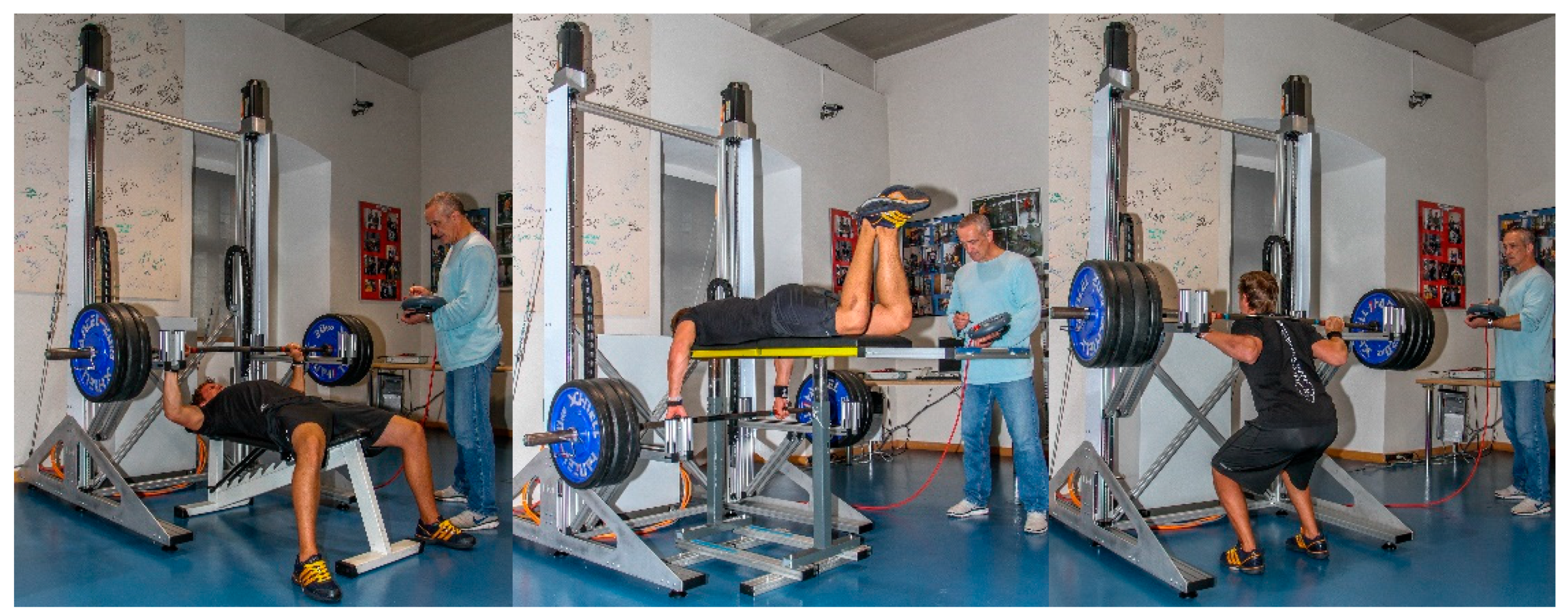
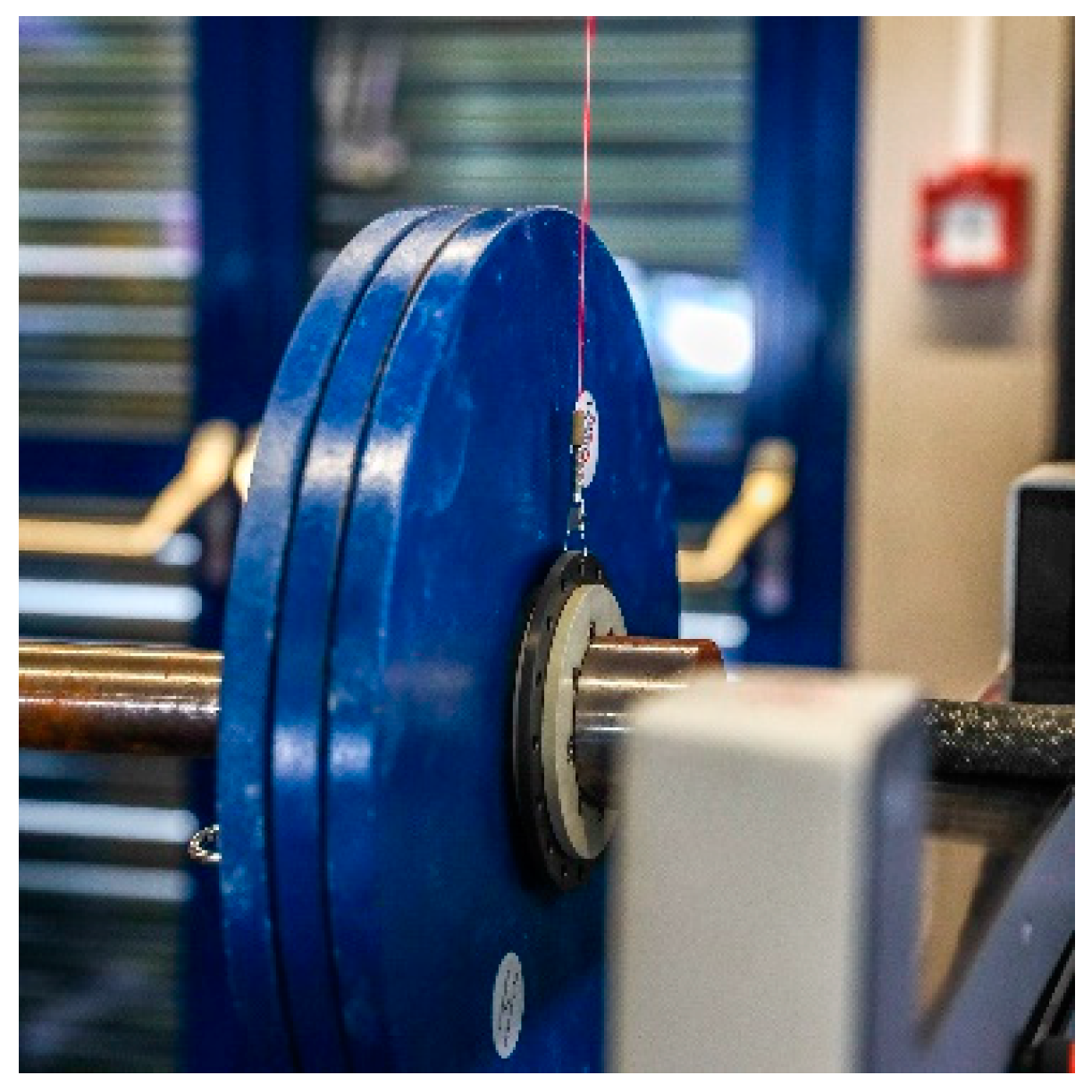
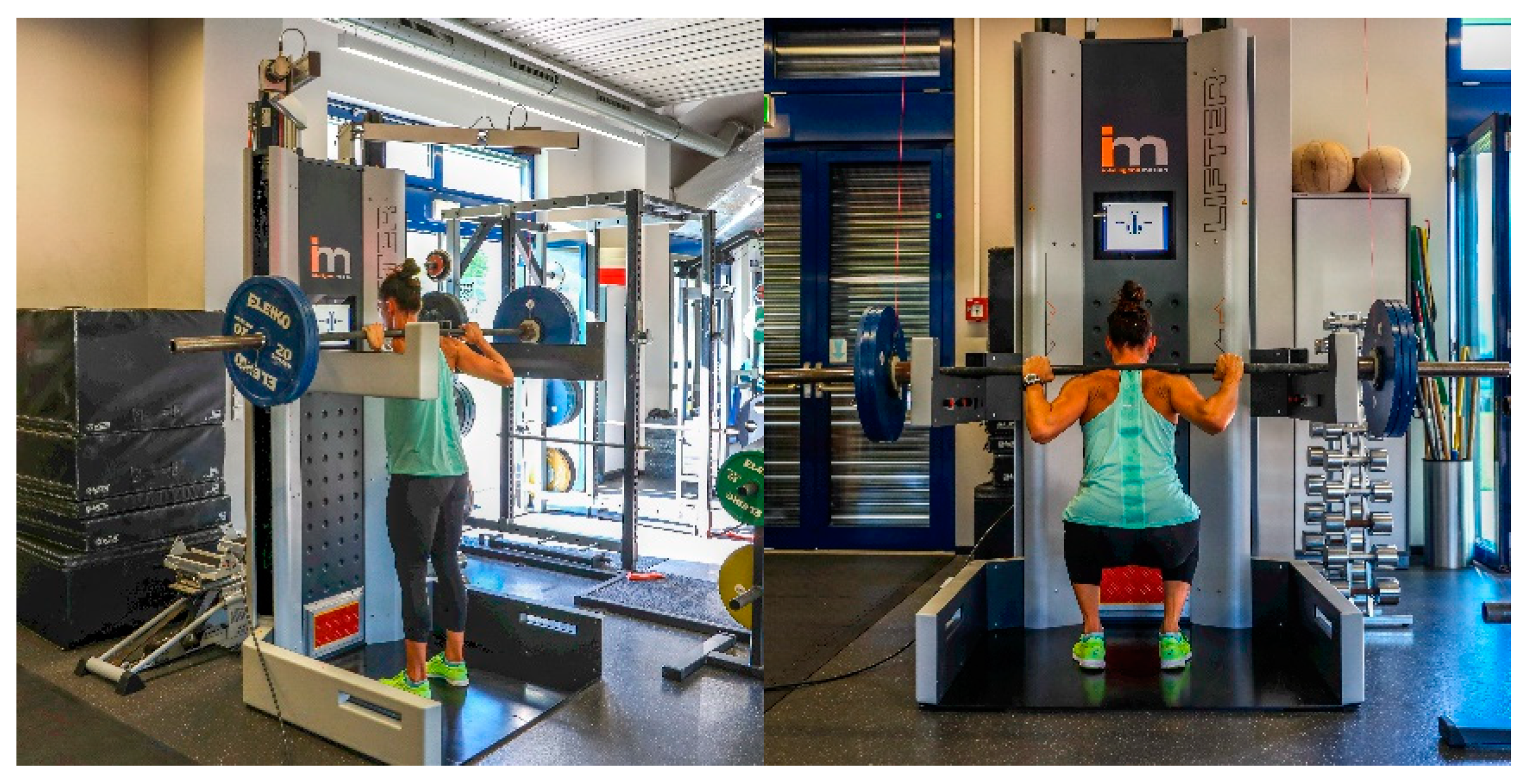
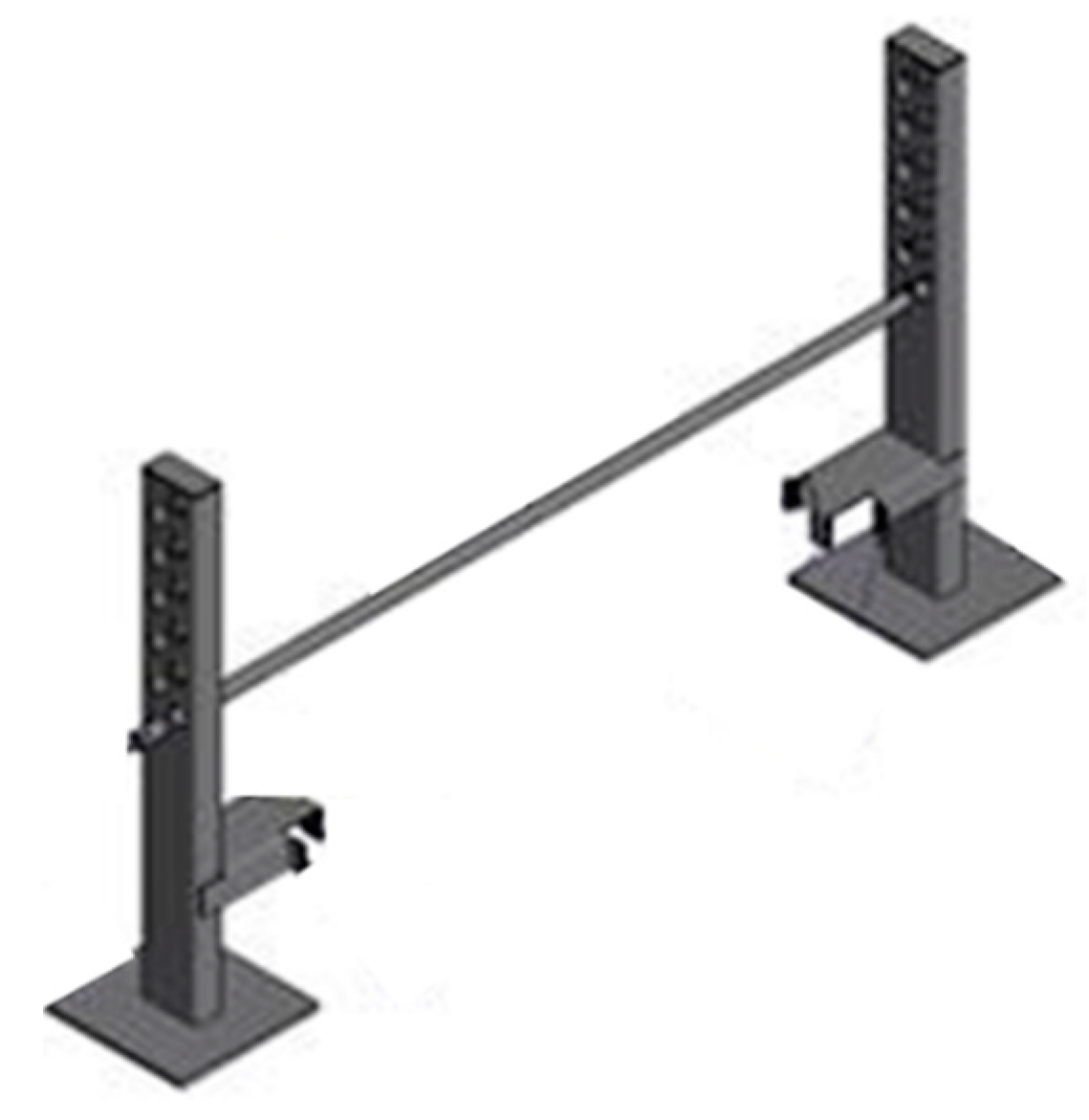
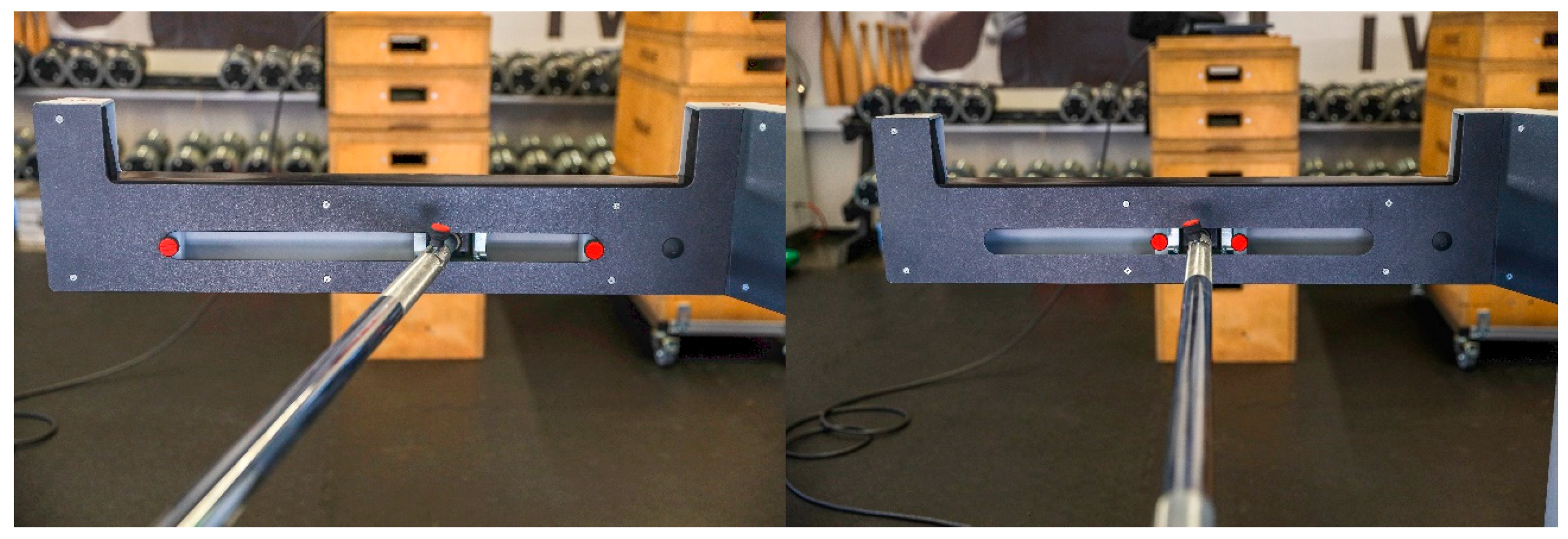
| MONTH | MAY | JUNE | JULY | AUGUST | SEPTEMBER | OCTOBER | ||
| PHASE | GENERAL PREPARATION PERIOD | SPECIAL 1 | REGNERATION – 1 WEEK | SPECIAL 2 | SPECIAL 3 | |||
| CAMPS | CON | SKI | OVERSEAS | SKI CAMPS EVERY WEEK, VARIED LENGTHS | ||||
| WEEKS IN CYCLE | 2 | 5 | 4 | 2 | 3 | 4 | 3 | |
| STRENGTH | STABILITY | MAXIMAL | SME | MAINTAIN | POWER, MAINTAIN STRENGTH | |||
| WORKOUTS (WO) SETS (S) REPS (R) | 6 WO | 10 WO 3–4 S, 3–5 R | 7 WO 6–10 S, 2–4 R | 2 WO 3–5 S, 3–8 R | 2 WO 3–5 S, 3–8 R | HEAVY SQUAT: 2–5 S, 1–5 R; SPEEDSQUAT: 3–5 S, 5–8 R; JUMP: 2–5 S, 5–8 R | ||
| 21.06 | L | R | 27.06 | L | R | 01.07 | L | R | 04.07 | L | R | 08.07 | L | R | 11.07 | L | R | 15.07 | ||
| N | 40 | 15 | N | 40 | 15 | N | 40 | 15 | N | 40 | 6 | N | 60 | 6 | N | 40 | 10 | N | 40 | 6 |
| N | 60 | 8 | N | 60 | 8 | N | 60 | 8 | N | 60 | 8 | N | 80 | 5 | N | 60 | 6 | N | 60 | 6 |
| EOL | 60 | 3 | EOL | 80 | 3 | N | 80 | 5 | N | 80 | 5 | EOL | 110 | 4 | N | 80 | 5 | N | 80 | 5 |
| N | 80 | 4 | N | 80 | 5 | N | 90 | 3 | EOL | 100 | 2 | N | 100 | 3 | N | 90 | 4 | N | 100 | 3 |
| EOL | 80 | 3 | EOL | 90 | 3 | EOL | 100 | 2 | N | 100 | 3 | EOL | 110 | 4 | N | 100 | 3 | EOL | 110 | 3 |
| N | 90 | 3 | N | 90 | 3 | N | 100 | 3 | EOL | 110 | 3 | N | 110 | 3 | EOL | 110 | 3 | N | 115 | 1 |
| EOL | 100 | 3 | EOL | 100 | 3 | EOL | 110 | 2 | N | 100 | 3 | EOL | 120 | 33 | N | 110 | 3 | EOL | 120 | 3 |
| N | 100 | 3 | N | 100 | 3 | EOL | 120 | 2 | N 1 L | 60 | 3 | N | 115 | 1 | EOL | 110 | 3 | N | 120 | 3 |
| N | 105 | 3 | EOL | 110 | 3 | 115 | 1 | EOL 1L | 60 | 3 | EOL | 120 | 3 | N | 115 | 3 | EOL | 125 | 2 | |
| N | 110 | 3 | EOL | 120 | 4 | EOL | 125 | 2 | N 1 L | 60 | 3 | N | 117.5 | 1 | EOL | 120 | 3 | N | 120 | 3 |
| EOL | 110 | 3 | EOL | 120 | 4 | 117.5 | 1 | EOL 1L | 75 | 3 | EOL | 122.5 | 3 | N | 115 | 3 | ||||
| EOL | 110 | 3 | EOL | 130 | 2 | N 1 L | 60 | 3 | N | 117.5 | 1 | EOL | 120 | 3 | ||||||
| N | 115 | 1 | N | 120 | 1 | EOL 1L | 90 | 3 | EOL | 122.5 | 3 | N | 117.5 | 3 | ||||||
| N | 100 | 6 | N 1 L | 60 | 8 | N | 117.5 | 3 | EOL | 122.5 | 3 | |||||||||
| EOL 1L | 90 | 3 | N | 120 | 3 | |||||||||||||||
| Workout Volume | Workout Volume | Workout Volume | Workout Volume | Workout Volume | Workout Volume | Workout Volume | ||||||||||||||
| N | 1060 | N | 300 | N | 1252.5 | N | 2640 | N | 1450 | N | 2385 | N | 1135 | |||||||
| EOL | 960 | EOL | 1590 | EOL | 1170 | EOL | 2420 | EOL | 2335 | EOL | 1747.5 | EOL | 1060 | |||||||
| Total | 1720 | Total | 1890 | Total | 2422.5 | Total | 5060 | Total | 3785 | Total | 4132.5 | Total | 2195 | |||||||
Publisher’s Note: MDPI stays neutral with regard to jurisdictional claims in published maps and institutional affiliations. |
© 2020 by the authors. Licensee MDPI, Basel, Switzerland. This article is an open access article distributed under the terms and conditions of the Creative Commons Attribution (CC BY) license (http://creativecommons.org/licenses/by/4.0/).
Share and Cite
Patterson, C.; Raschner, C. Supramaximal Eccentric Training for Alpine Ski Racing—Strength Training with the Lifter. Appl. Sci. 2020, 10, 8831. https://doi.org/10.3390/app10248831
Patterson C, Raschner C. Supramaximal Eccentric Training for Alpine Ski Racing—Strength Training with the Lifter. Applied Sciences. 2020; 10(24):8831. https://doi.org/10.3390/app10248831
Chicago/Turabian StylePatterson, Carson, and Christian Raschner. 2020. "Supramaximal Eccentric Training for Alpine Ski Racing—Strength Training with the Lifter" Applied Sciences 10, no. 24: 8831. https://doi.org/10.3390/app10248831
APA StylePatterson, C., & Raschner, C. (2020). Supramaximal Eccentric Training for Alpine Ski Racing—Strength Training with the Lifter. Applied Sciences, 10(24), 8831. https://doi.org/10.3390/app10248831





